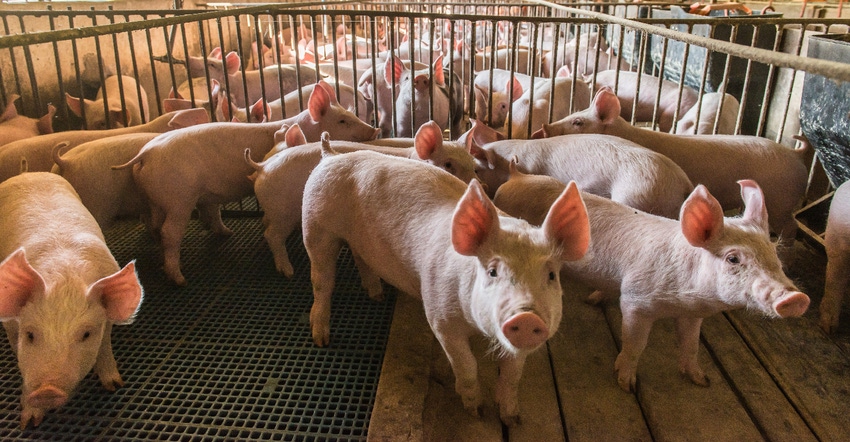February 2, 2021

Corn and soybean prices have risen sharply since mid-August 2020. Smaller-than-expected 2020 U.S. harvests of both corn and soybeans are a key reason for the price rally. But just as important is the rise in exports of both crops to overseas destinations — primarily China. The increase in China’s demand for feedstuffs is tied to the resurgence in the Chinese pork sector as the country attempts to rebuild its hog herd and boost the supply of pork to Chinese consumers.
The magnitude of the Chinese hog sector is hard to grasp initially. Back in the mid- to late 1970s, pork production in China ranged from 18% to 19% of total pork production around the world. U.S. pork production ranged from 14% to 15% at that time. By 2010, pork production in China accounted for 50% of the world’s production, while the U.S. accounted for just 10%. That changed quickly when African swine fever hit in China.
In 2017, hog slaughter in China totaled 702 million head, nearly six times the number of hogs processed in the U.S. that year. ASF devastated the Chinese hog herd beginning in 2018. By 2020, hog slaughter volume plummeted to an estimated 455 million head, down 36%. Chinese pork production declined from just over 120 billion pounds in 2017 to less than 84 billion pounds in 2020. The 36 billion-pound reduction in China’s annual pork production exceeded the volume of pork produced in the U.S. during 2020, which was just over 28 billion pounds.
China is rebuilding its pork production sector. USDA forecasts a rebound in China’s hog slaughter, from 455 million head in 2020 to 530 million head in 2021. For 2021, USDA forecasts that U.S. hog slaughter will rise to 134 million head. So, the expected increase in hog slaughter in China this year would be analogous to a 55% rise in U.S. hog slaughter volume!
More change
The impact of the expected rise in Chinese pork production is exacerbated by a shift in the way pork is produced there. Historically, a large portion of China’s pork production capacity came from small hog operations that didn’t employ U.S.-style hog diets. China has encouraged development of large-scale commercial-type operations that rely on hog rations more comparable to U.S. feeding regimes. Industry expansion, combined with the ongoing change in production technology, is placing more pressure on China’s feedstuffs sector, in turn leading to a large increase in demand for imported corn and soybeans.
In addition to boosting demand for U.S. corn and soybeans, ASF provided a boost to U.S. pork exports. Preliminary data for 2020 indicates U.S. pork export volume rose about 18% above 2019’s volume, even though exports to Mexico and especially South Korea were weaker than in 2019. The biggest year-over-year increase in pork shipments was to mainland China, which more than doubled in 2020. Pork exports to China during 2020 accounted for nearly 30% of all U.S. pork exports, up from a market share of just 14% in 2019.
Although pork exports to China could slow down during the last half of 2021, economic recovery in other key markets later this year could provide ongoing support to the U.S. pork trade.
Mintert is a Purdue University agricultural economist and director of the Purdue Center for Commercial Agriculture.
About the Author(s)
You May Also Like




